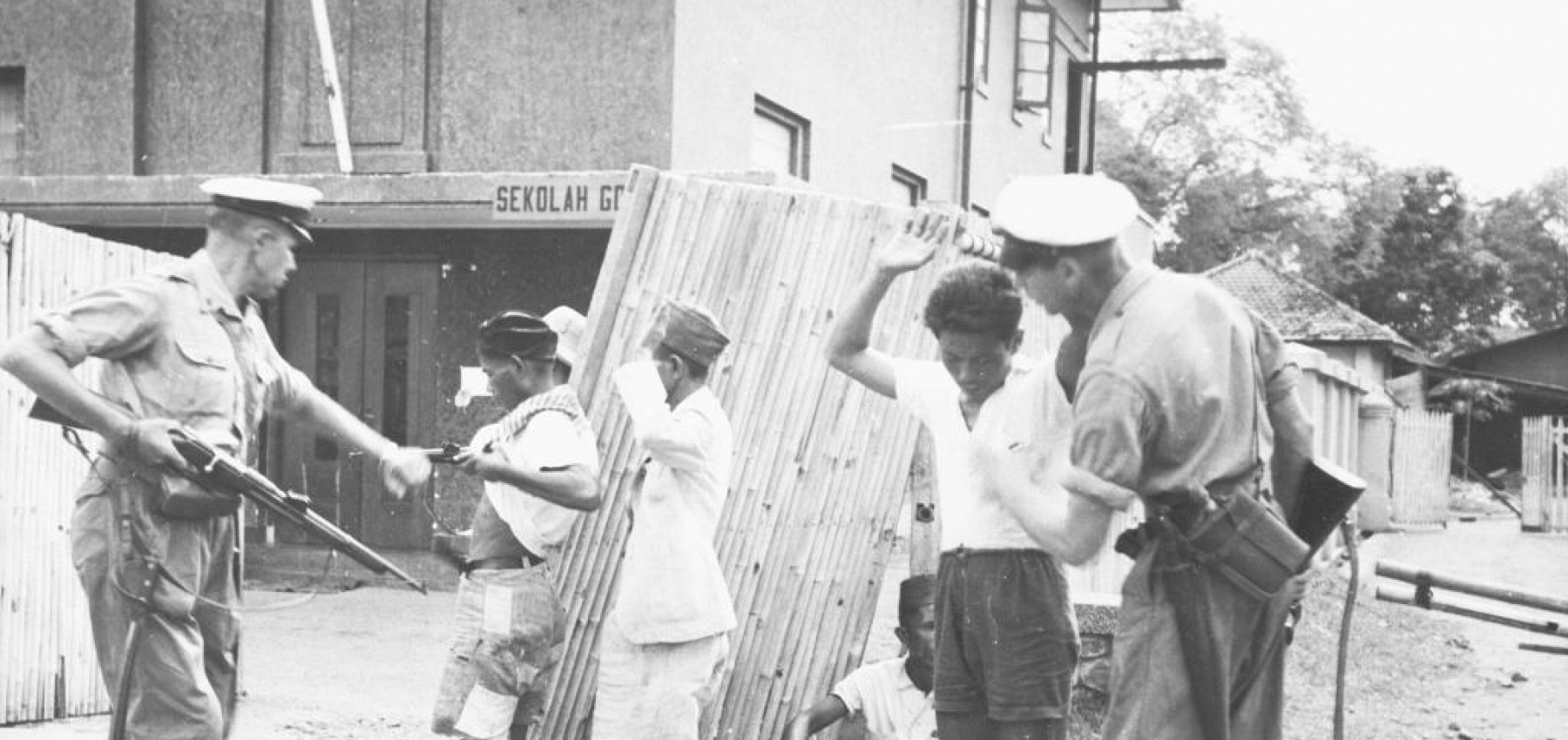This substudy focuses on the period of violence that occurred shortly after the Japanese surrender in the Dutch East Indies/Indonesia on 15 August 1945. Committed to developing a comprehensive view, the study seeks to take the political and military situation at the time fully into account. The research conducted in this substudy focuses primarily on the violence that occurred during the bersiap period, one that is usually regarded in Dutch historiography as having been a period in which acts of extreme violence were committed by Indonesians against those of Dutch and Dutch-Indonesian heritage. In addition to bersiap, the term berdaulat is used in Indonesian historiography in relation to similar outbreaks of violence.
However, this violence cannot be viewed separately from violent incidents that occurred at the same time between various other population groups and actors in Indonesia. These conflicts were part of a larger, interconnected whole. In other words, to achieve a proper understanding, these conflicts cannot be studied separately from each other. The violence that erupted after the Japanese surrender was characterized by its stratification and simultaneity, both at the structural (societal) level and at the level of the individual. For this substudy, the foregoing considerations mean that the violence between Indonesians and those of Dutch and Dutch-Indonesian heritage must be studied in close connection with acts of violence committed by and against the Chinese, Japanese, British, Dutch, Menadonese, Moluccans, Dutch, Indonesians (berdaulat and revolusi sosial) and possibly other population groups.
This substudy consists of two parts:
- A quantitative survey (as far as possible) of victims and perpetrators, including the roles of ethnic origin, gender, age, social background and the medical details of victims and perpetrators, and the date and location of the event, circumstances at the scene, and the motives and degree of organization of perpetrators;
- An analysis of the possible structural and individual factors that contributed to the outbreak of the violence shortly after the Japanese surrender (including the Dutch colonial tradition of violence and the Japanese occupation) and the consequences, even continuation, of this violence during the decolonization war in Indonesia as well as the later recollection of this war in both the Netherlands and Indonesia.
The researchers carrying out the project Violence, bersiap, berdaulat. 1945-1946 transition, are Esther Captain and Onno Sinke.






